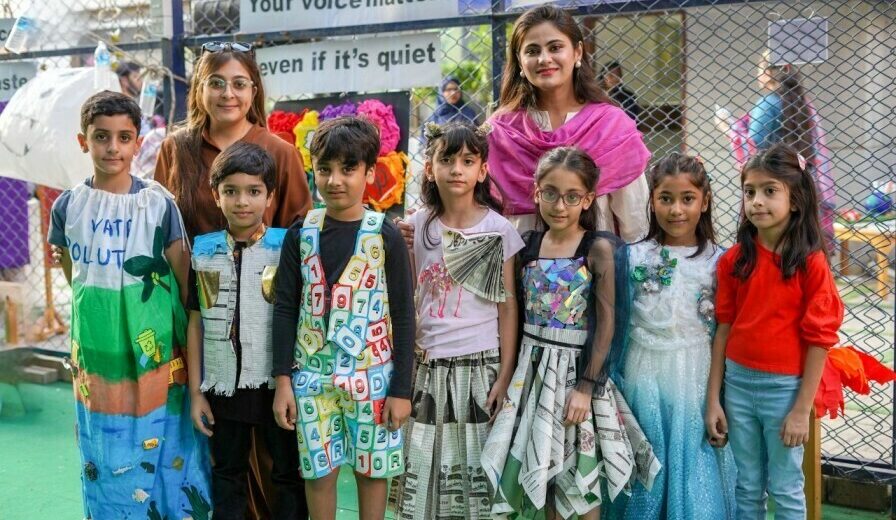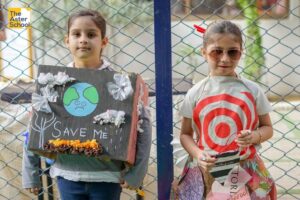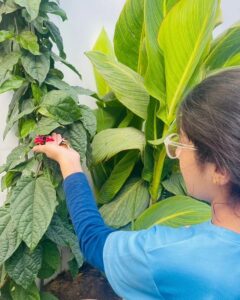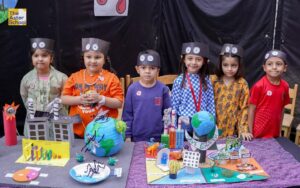
Aster Redefines School Sustainability
The school empowers young learners to tackle climate change through hands-on sustainability education and community action.
Climate Education: A Call to Action for a Sustainable Future
Every day, the signs of a warming planet grow more urgent and personal: record-breaking heatwaves, glaciers melting into memory, and lush forests fading into deserts. Climate change is no longer a distant threat—it’s the storm outside our windows and the worry in our hearts. The Intergovernmental Panel on Climate Change (IPCC) warns that global warming is likely to exceed 1.5°C by 2030 without transformative action; This will cause devastating effects on the ecosystem, infrastructure and a danger to societal structures as a whole. This is not just science; it’s a call to protect what we hold dear—our homes, our communities, our children’s future.
Aster School: Nurturing Young Climate Change Champions
In Pakistan, where environmental challenges like water scarcity and pollution weigh heavily on daily life, one institution is leading the way: The Aster School. At Aster, sustainability is not just a concept but a core value. It’s woven into the curriculum, the culture, and the vision for the future.

One such example of the environmental initiatives taken is Aster’s Green Goals module which goes beyond teaching facts about climate change—it immerses students in hands-on experiences. Through lessons on conservation, renewable energy, and sustainable living, children are equipped with both knowledge and the tools to act.
Aster’s youngest learners are already proving that even the smallest actions can spark a big difference. Inspired by a recycling project, a three-year-old student took matters into their own hands, saving milk cartons at home to create a dustbin and proudly declaring, “We shouldn’t throw this away. Let’s make something useful!” Another young Eco-warrior guided their family in saving water while brushing their teeth, demonstrating a remarkable understanding of the power of collective action. These tiny trailblazers are a shining example of the impact that can be made when passion meets purpose – and a testament to Aster’s commitment to nurturing a new generation of Eco-conscious leaders.
A Community Effort: Recycling and Conservation
Aster School’s influence ripples far beyond its campus walls, transforming lives and communities. Over the past year, Aster School’s recycling efforts have yielded impressive results: 100 kilograms of plastic, 200 kilograms of paper, and 50 kilograms of steel have been diverted from landfills. This achievement is thanks to the active participation of parents and families, who contribute items for reuse and recycling, reinforcing sustainable habits at home. And in doing so, they sow seeds of a greener tomorrow.

Additionally, old toys donated by families are given to NGOs, emphasizing the values of reducing waste and helping others. Through initiatives like these, Aster is creating a culture of environmental and social responsibility.
Students also engage in projects that connect them with nature, such as butterfly conservation initiatives and learning about the importance of specific plants for the ecosystem. Senior school students take this engagement a step further by participating in field trips to urban forests, collaborating with butterfly conservationists, and practicing organic farming. These immersive experiences not only deepen their understanding of climate challenges but also inspire them to take meaningful action.
Learning Beyond the Classroom

At Aster, experiential learning is a cornerstone of climate education. Students participate in initiatives like creating eco-bricks from waste, energy conservation campaigns, and community clean-ups. These hands-on activities empower children to take ownership of environmental challenges and become active participants in creating solutions.
Parents have noticed the ripple effect of this learning at home. “My child’s perspective on waste completely changed after a composting project at Aster. Now, we have a compost bin at home, and our entire family has started thinking differently about food waste,” one parent shared.
Sustainability at the Heart of Celebration

Even in celebrations, Aster leads with intention. Their annual Children’s Day is a vibrant showcase of student-led projects on renewable energy, recycling, and conservation. Highlights include eco-fashion shows featuring outfits made from recycled materials and interactive workshops on upcycling and composting.
The school’s commitment to sustainability is evident in every detail, including eco-friendly giveaways such as plantable seed balls and reusable bags. The school also partners with innovative organizations like Bigger Bricks, collectively gathering recycled materials to craft eco-bricks – a project that sparks enthusiasm among students, staff, and parents alike.
Empowering Teachers to Lead the Way

Aster recognizes that climate education doesn’t stop with students. Teachers are a vital part of this transformation. The school invests in training its educators to integrate sustainability into their teaching practices, ensuring they can inspire and guide their students effectively.
“This isn’t just about educating students; it’s about creating a ripple effect where students, teachers, and parents work together to build a more sustainable world,” shares Falak Shaikhani, Director of Aster School. “When our students take what they’ve learned and apply it at home—whether by conserving water, reducing waste, or inspiring their families to do the same—we know we’re making an impact.”
A Vision for a Sustainable Future
Aster’s holistic approach to climate education is a beacon of hope, nurturing future leaders who will tend the earth with love, care, and wisdom. By embedding sustainability into its core, Aster sets a shining example for institutions everywhere, proving that education can be a powerful catalyst for transformative change. This is a call to action for all schools to prioritize climate education – not just as a subject, but as a way of life. Together, we can ignite a love for the earth in the hearts of our children, and give them the courage to create a brighter, more sustainable future for all.
References:
